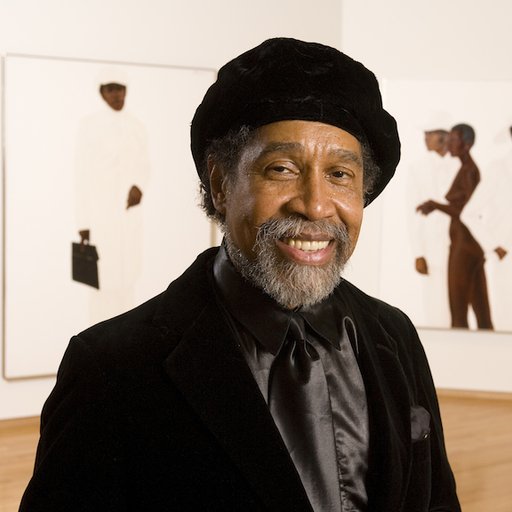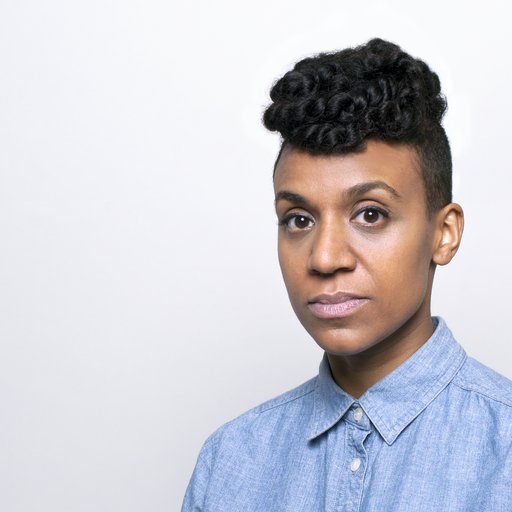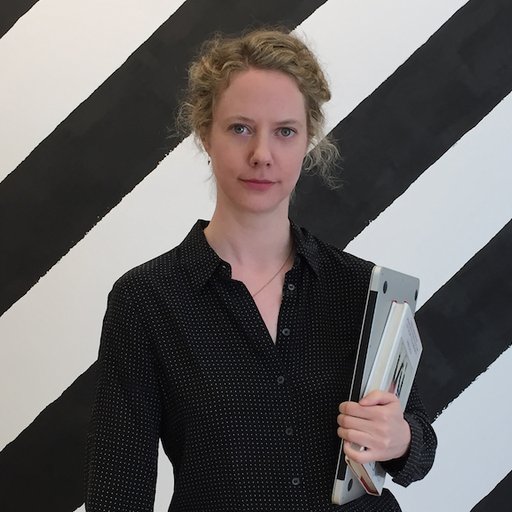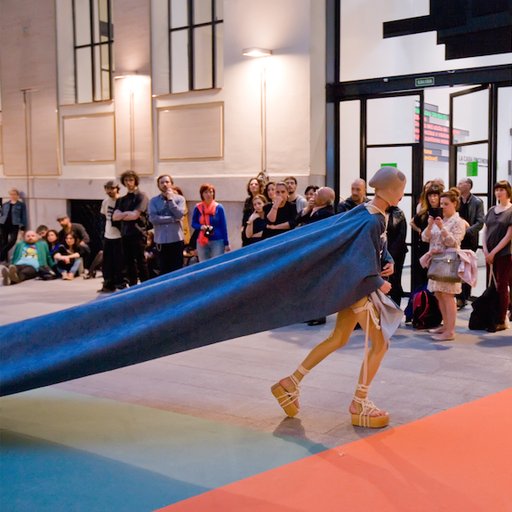An extraordinary painter of hazy, narcotic, offhand-seeming paintings that thrum with arresting charisma, Tyson Reeder has been ascending to new heights of recognition lately at New York’s CANADA gallery, drawing plaudits from the city’s most esteemed critics. But being a slacker art virtuoso is merely the guise he wears by day—his alter ego is as one half of the art world’s most reliably anarchic duo, the Reeder brothers, alongside his sibling and fellow artist Scott Reeder. Together, these two have been pantsing the serious art world for years, with stunts ranging from organizing art fairs in the dark to pitting their intoxicated peers against each other in their famous “Drunk vs. Stoned” soccer matches.
Now, Tyson Reeder has designed a limited-edition basketball artwork for this year’s edition of NADA New York—in tribute to its location at Basketball city—and to mark the occasion, Artspace editor-in-chief Andrew M. Goldstein spoke to the artist about what it’s like to grow up with your best collaborator, what an underwater exhibition looks like, and which intoxicant makes for savvier athletes.
Painter, gallery owner, comedy club proprietor, anarchic sports enthusiast, art-fair experimentalist… you are a pretty multivalent guy, to say the least. How did this whole thing first start for you? When did you start getting interested in art?
I don’t know, but maybe it was just my parents having lots of art materials around the house. My brother is a painter too, and we started messing around with materials early on, in high school. I also have an artsy aunt who would take me to museum shows in Chicago, so that sped things up. We both grew up in East Lansing, Michigan, so it wasn’t like we grew up in a super-urban art-hub cultural center—and, in the Midwest, Chicago is a lifeline. I remember seeing a Keith Haring show at the Museum of Contemporary Art Chicago when I was 12 and getting the t-shirt. These early things turned me on to art.
What kind of art supplies did your parents keep in the house?
[Laughs] Well, any time they wanted to keep us from getting into trouble they would just have a lot of markers lying around and we would instantly start making comics and cartoons. I think the brother energy also sped things up—he was just another person who nerded out on art, you know? We were both really into it, and also music and making videos and other things, and we had a kind of collaborative energy that can be rare among siblings. We kind of spurred each other on to do stuff.
When did you get into painting?
I had a really good, weird high school art teacher who was a macho woodcarver—he’d carve himself out of wood with a chainsaw—and he took students to New York City, so that gave me a lot of exposure to great paintings. But drawing and painting were the first kind of things that were always available, because you can always do it yourself.
I’m a little different, though, in that I’ve never really been a painting purist, and most painters are primarily passionate connoisseurs of painting. If people have interdisciplinary practices they’re usually not painters—they’re working in performance, maybe, or installation—because painters tend to be pretty obsessive and it takes such a long time. But I’ve always been interested in collaboration, so I’ve always had more social practices that I do in addition to the paintings, moving between the two.
It’s funny that your parents gave you art supplies to keep you out of trouble, because it seems like you’ve been using them to get yourself into as much trouble as possible ever since. If I were to put an overall cast to the work you do, it seems like it always comes from the back of the classroom—like you’re trying to get a reaction out of someone with your art. Where does the sibling dynamic with your brother play into this?
It always came and went. In college we were on our own, and we haven’t always lived in the city, but in terms of family humor there’s definitely always been this kind of inside-joking quality to what we’ve done and the weird phenomenon of the sibling artist thing. I also think another part of it is operating from the outside, geographically speaking—a lot of the maverick, back-of-the-classroom humor comes from us growing up in Michigan and settling in Milwaukee, Wisconsin, for almost 10 years.
Trying to be studio artists there led to those kinds of ideas, where you’re in the middle of nowhere, off the art-world map, and no one’s really paying attention. It was almost like striking out of boredom—we had to make our own culture, our own perspective and aesthetic standard. There wasn’t any art movement to grab onto, so we were watching what was happening in New York and L.A., seeing some kind of trend or consensus developing out there, and a critique started to form: What would be the best way to send that up?
One great thing about humor is that it’s a very effective way to get people interested in what you’re doing who wouldn’t normally be interested. Was that part of its appeal to you as someone who grew up making art in suburban Michigan?
You mean like a cry for help? [Laughs] Yeah, I think on some level it’s about audacity. It’s a tool any artist can use—a way to create drama. I think surprise is a big part of comedy, and a lot of comedy hinges on new material that you’ve never heard. There’s such a premium on keeping things surprising, and there’s a lot of that in art too. Great artists like Warhol and Duchamp were aware of that, being aware of the theatrics of how they rolled out their art, not just the fetishism of the objects. How to make it stick out like a sore thumb.
What kind of comedians are you into? I’m guessing Andy Kaufman.
Yeah, I’ve always loved Andy Kaufman—he’s great. It’s physical and words. He’s always playing off some kind of visual prop, like when he’s playing the bongos or his record player. It’s also hard to locate his intellect, you know? It either comes off as naive or super cerebral. I guess I like a lot of humor like that, and I like a lot of art like that, where you can’t locate the position so clearly as opposed to really high-minded critique that’s opaque. I like when something appears dumb at first, like how people either think Warhol is either the dumbest person in the world who's getting away with murder, or a genius.
That nicely describes your paintings, which tend to have this kind of casual, tossed-off, shambolic look to them. I know you’ve done some plein-air painting, and actually all of your paintings seem like they were done quickly, on the go. How did you arrive at this style?
Rushed? [Laughs] Well, in terms of its evolution, I started showing my work in this tiny gallery in New York, Daniel Reich, who showed out of his apartment on 22nd Street, and I was making a lot of works-on-paper very fast. It was a different time, in the early 2000s, where drawing and collage were an antidote to the fabricated works that were showing in these new, alienating, airplane-hangar Chelsea galleries.
His apartment gallery was consciously trying to go against that, making everything very human-scaled, intimate, and tactile rather than virtuoso and high-production. I think my works looks like anyone could make them—the materials are always very modest, the scale is modest. There’s some poetry there that I like, when the means are reduced.
The materials may be simple, but your paintings are incredibly exuberant, with really high-keyed colors—it’s almost as if they’re plugged into some electrical source. What is the process that gets you there?
I do a lot of drawings, and I have this system of index cards where I work out a lot of ideas in small scale—I bring them with me when I travel—and sometimes I like there to be a clash between the surface and the image, so I write a word on the back of the index card, like “tree” or some dumb pedestrian image, and then make a kind of color wash on top. Then I’ll have to kind of impose that noun or graphic imagery over something abstract, like a few formal, unrelated blobs that have to be incorporated with the image.
It leads down a kind of chance rabbit hole that I like, where things aren't completely controlled or planned-out. That’s where those heightened colors come from—they’re chance-driven, just kind of spilled on. I paint pretty thin, so you can see those colors coming through.
It’s kind of like a formula?
Yeah. It helps me get to somewhere new, where there’s a little bit of tension, and since I work with nameable things it helps to get things away from being too much like a picture. Everything is kind of fuzzy around the edges, with a watery blurring of boundaries.
Speaking of blurring boundaries, you pretty early on segued out of just making art yourself to showing work by others, beginning with the gallery you founded with your brother, the General Store. Why did you decide to open a gallery, and what happened to it?
It was only around for three years, not that long, but I guess we wanted a lifeline when we were living in Milwaukee, and it was an experiment to see what people would do in a place that had less scrutiny, if they would show things that were outside their normal practice. And that’s what people did, and what people still do at the Green Gallery. But our gallery was structured so that the front gallery was for affordable things that artists made in addition to their main thing, so if they were in a band we had CDs or we had ceramics or clothing. Now Ooga Booga has done that too.
We had some successful shows too, and we did one of the first NADAs. Eventually we closed it because we wanted to do different things—I’m not sure if it was our true calling to bubble-wrap other people’s paintings. It seemed better to be roving curators without a space, and then “Drunk vs. Stoned” and the art fairs came after that.
“Drunk vs. Stoned” became the stuff of legend pretty soon after it debuted in New York in 2005. Can you tell the story behind that show?
We did two with Gavin Brown, one in the back of his bar Passerby and the other right when he opened his Leroy Street space. It evolves out of when Scott and I had our tiny, tiny gallery in a working-class neighborhood in Milwaukee and we got Laura Owens to do a show with us when she was doing a traveling mid-career retrospective at the Milwaukee Art Museum, which was a big coup—we had museum trustees driving out to see it.
Anyway, Gavin is Laura’s dealer and he was really supportive, so he asked us for a list of group-show ideas. “Submerging Artists” was one of them, which was all these works underwater that I ended up doing at one of Gavin’s Frieze booths later on, and most of them had that kind of feel to it, where it was a set of instructions, almost like an assignment. I don’t know if that comes from teaching or what.
Inevitably, Gavin picked the most absurd idea on there, which was “Drunk vs. Stoned.” It was another set of conditions—originally you had to be either drunk or stoned and send us an object, but we looked up the dictionary definition of “drunk,” which is “lowered inhibitions,” and the dictionary definition of “stoned,” which is “heightened sensitivity,” and it evolved into a way to categorize art in general from all different time periods, where you could describe any work of art as either drunk or stoned.
So we pulled together all these artworks for the show and divided them onto two walls like a faceoff, with drunk ending up being more impulsive and about the body, like Charline von Heyl or messy painting, and stoned ending up as more myopic and shutting out the world and doodling on a piece of paper. It so happens that at that time there was all this neo-hippie, psychedelic art in New York, so stoned definitely won. [Laughs]
Wasn’t there also a “Drunk vs. Stoned” soccer game that accompanied the shows? How did that work?
Yeah, that’s always taken place at the soccer field in Chelsea. You just had to show up in the appropriate state, and Matthew Higgs was the referee. The first time, Stoned was totally winning but during halftime Drunk added all these players and Stoned was too stoned to notice, so Drunk just cleaned up. Cecily Brown scored a headbutt goal at the end.
We did it at Paramount Ranch recently too, and it was the same kind of situation—Drunk just had much more team unity while the stoners were just wandering into the bushes, giggling. I think it could be an annual New York thing. It was so fun.
Where would you say your own work falls on the drunk/stoned spectrum?
God, I’m somewhere in the middle! I was like that back then too. I’m loose but I kind of tinker with my surfaces—they’re not just one take—so they’re kind of fussy too.
You mentioned the art fairs that you and your brother did, and those were pretty addled too. They started with the Milwaukee International, the fair you founded in 2006 with your brother and his wife, Elysia Borowy-Reeder, together with Nicholas Frank and John Riepenhoff, and the Dark Fair, which you then held in 2008 at the Swiss Institute and the following year at Cologne’s Kolnischer Kunstverein. What inspired you to jump into the art-fair arena?
Well, this was in the mid-2000s, when art fairs were just starting to become ubiquitous—they were still a new phenomenon, and galleries were going begrudgingly, thinking, “Is this dumb trend going to last?” I remember that even Peter Schjeldahl wrote that in 10 years everyone would think it had just been an embarrassing phase. Now they’re bigger than ever, but back then, sitting in a shitty little bar in Milwaukee, we were like, “Wouldn’t it be funny to do one here?” or “Wouldn’t it be funny to do one in the dark?”
So… how do you do an art fair in the dark?
You just turn off the lights. [Laughs] We painted all the walls black and turned off the lights, and even though every gallery knew the set of conditions everybody said yes—like, “Let’s do this! This is a challenge!” It was also a critique, to try and make art fairs harder. We figured if artists were steering the ship it should have an artistic stamp on it—it shouldn’t be like any other fair but rather should be more like a creative act, where you forget that any business transactions are taking place.
There’s also that Duchamp show called “The First Papers of Surrealism,” where he was invited to curate and hung all these artworks in a dark space, with all the paintings connected together by a mile of string so that you’d be tripping all over it. So the conditions were not neutral, the opposite of a white cube. But we gave the collectors little flashlights, and some of them were writing checks in the dark without seeing the work. People actually sold their booth, like Leo Köenig, who brought a Tony Matelli piece. CANADA gallery, which was an early supporter of our fairs, showed Joe Bradleys in the dark.
Were collectors allowed to touch the art?
Yeah, a little of that happened I think, close quarters and all. There were a lot of candles, and the fire department came and shut us down. We did the one in New York right after the Armory Show ended, so it was totally packed. It was kind of like an after-fair.
By this point, you had spoofed your way through the mechanics of the art market, which led you to a natural next step: founding a comedy club. How did Club Nutz come about?
Again, that probably comes from being in this small community of artists in Milwaukee. Originally we did it in this space attached to the Green Gallery, which is the one good gallery in Milwaukee, as a funny idea for the place where the after-party for an opening would be.
I guess it came out of an interest in the social—I’ve always been fascinated by the untold history of art movements, how the Bauhaus would have great parties with great costumes that you’d enter through a slide, and the Surrealists had great parties, but you don’t hear about them as much as the objects. Or the Cabaret Voltaire—these strange backrooms where the Dadaists would do poetry, or the Mudd Club and all the artist clubs of the ‘80s.
But this is kind of a ridiculous summary—the main thing is that Club Nutz is really small, so it’s like telling jokes in the elevator, where you’re standing two feet from the comedians so you have to laugh. They’re usually 10-by-10-feet or smaller, with a brick wall, and it’s part programmed and part open-mike. There’s always fake laughter and sound effects, which makes it easier. I guess Scott and I just wanted to do something that had to do with performance, where there’s no money involved and it’s just immediately gratifying.
It seemed like a fun experiment, where we could take a break from surface fetish, but early on we got all these weird opportunities to do it at a big scale. We found out that Club Nutz fit perfectly into an art fair, so we did it at Frieze London in 2009 and, you know, it was like art booth, art booth, and then comedy booth, because it was just another 10-by-10 room, with a bouncer standing outside the door. It was right when the economy crashed, and we had a keg, so all these dealers came in to commiserate over pints of beer.
It functioned well in art fairs, because it was kind of real/not real at the same time. There’s a lot of social-practice art where you’re aware that it’s being documented as somebody’s art project the whole time and it’s not really that fun—I’ve been to a million things like that. The club, when it’s best, makes you forget that it’s an art project because the people are actually funny and you’re actually laughing and then it turns into a dance party and you’re actually dancing. That slippage is interesting to me, which is why I never really talk about it as a project.
Who were the comedians?
We just booked whoever we could. When we did it in Chicago we booked this woman named Vanessa Bayer who was in Second City, the comedy mecca, and then two weeks later she joined “Saturday Night Live.” And the comedians usually like it, because it’s truly underground. Also, artists who have one foot in performance enjoy it, so Cory Arcangel performed at one, Emily Sundblad, and Brian Belott hosted one. Gavin Brown told a bunch of jokes at Frieze. I think people just like the challenge—and everyone has at least one joke to tell.
Where else have you done it?
We’ve done it all over the place by now, like the ICA London, where it was part of the Jeremy Deller show. I think we’re going to do it here in New York too at 57 Henry—the dealer Ellie Rines has this tiny gallery, and she invited me to do it.
Now, NADA New York has rolled around, and you’ve created created a limited-edition art basketball for for the fair, colored in the classic red, green, blue, and black of the Bic Four-Color pen. You’ve been working with these pens for some time now, ever since you did “The Four-Color Pen Show” in 2007. What was that all about?
Again, it was just a parameter that I set up to see who said yes, and everyone said yes for some reason. Scott had a teacher back in Iowa, David Dunlap, who is obsessed with those four-color pens—he made a wooden monument to them, and he kept these really meticulous notebooks with those pens. So I guess we’ve always used those pens, and Scott uses them as an organizational system, and we did a show where we sent out those pens to artists through the mail and asked for artworks in return that they made with them.
When we hung it in Miami at the Locust Projects gallery we painted the walls each of the colors—red, green, black, blue—and we had the more famous artists next to the less famous artists, and people’s favorite ones were always the ones by artists who had a lot of time on their hands. Like, a guy did one of Charles Bronson, drawing every hair on his mustache. Some people got fancy and broke the pens open and used the ink to paint, figuring out how to make brown by mixing them.
So, in closing, what’s the next unexpected project you have coming up?
I’ve been making music in the basement of CANADA with Jack Hanley and Phil, this completely random group of repressed musicians, so I’m going to be doing that more. I’ve also been making these paintings of album covers for fictional bands, so maybe that could be an interesting show. Then my brother bought this building in Detroit that’s kind of unformed in terms of what it’s going to be, so I’m going to be helping him with that, going between New York and Detroit more. I'm not sure how much more I can say about that, but it looks like Detroit is the next place to go.























